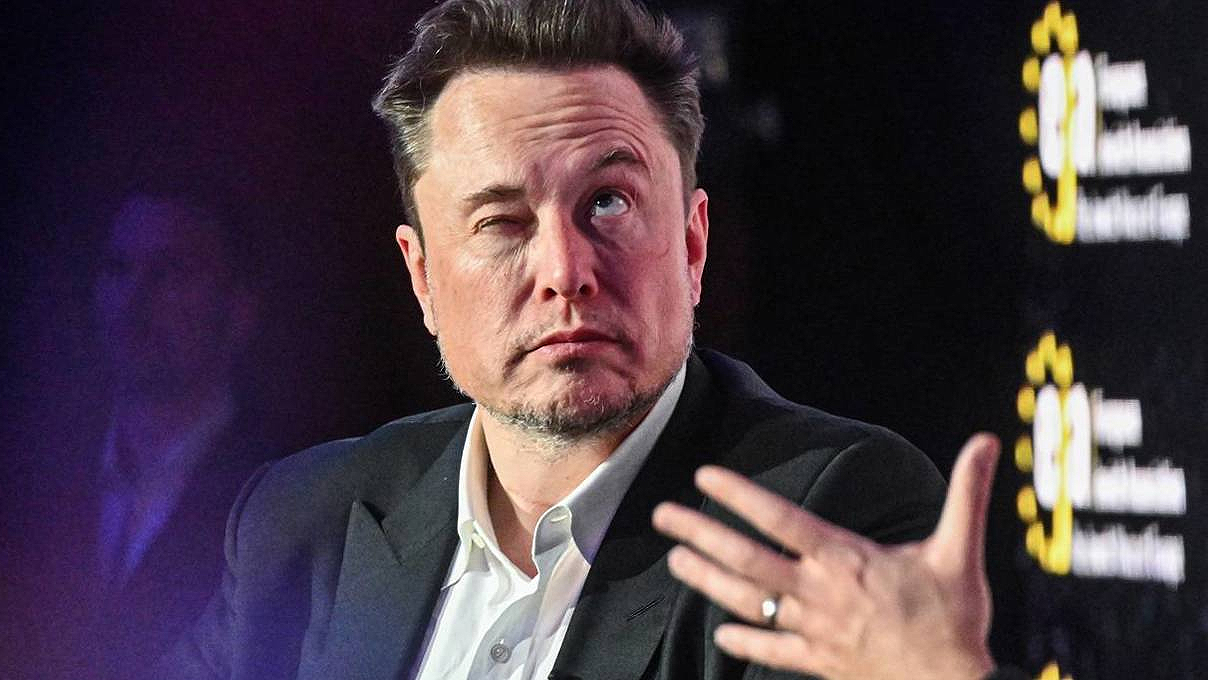
From the standpoint of America and the world, Tesla is a historically important technology-generating enterprise – the tip of the spear in the transition away from internal-combustion-engine vehicles. From the standpoint of long-term shareholders, it has the potential to be a sustainable profit-making enterprise. From the standpoint of its suppliers, employees, and customers, it is a source of income and production. And from the standpoint of Wall Street speculators, it is a bouncing ball in a roulette wheel: a tech-bubble casino play.
In early 2018, Tesla’s board of directors and shareholders approved a pay package for CEO Elon Musk granting him 12 tranches of stock options, each equal to about 1% of the company’s total equity, valued fully at some $55 billion. The first tranche would vest if Tesla’s market capitalisation surpassed $100 billion, and each successive tranche would vest when it rose another $50 billion (provided that the company also met various revenue and cash-flow targets).
That compensation package is now in the courts, where the Delaware Chancery has found that the process by which it was approved failed to meet the arms-length standard required of an executive who is also a shareholder with effective control over the company. Even so, Musk will probably prevail once all the legal i’s are dotted and t’s crossed. After all, the board is tame, and most Tesla shares are held by diehard Musk fans.
As a result, Musk holds about 22% of Tesla, instead of the 10% stake that he had before the pay package. Among his other holdings, SpaceX alone shows great promise. Nobody would be surprised if X (formerly Twitter), The Boring Company, and the others all went to zero. Musk may be worth $160 billion on paper, but his $120 billion stake in Tesla is the only component of his wealth that does not depend on some idiosyncratic buyer showing up with the right valuation at the right time.
Before the pay package, Musk was a run-of-the-mill Silicon Valley billionaire, though perhaps the most consequential one. He is clearly an effective fundraiser, cheerleader, and occasional coach for engineers working on battery technologies, electric vehicles, and rocket science. Without him, those technologies would not have been pushed forward as much as they have.
Though he is notorious for over-promising, Musk over-delivered in these cases. When the history of humanity’s effort to tackle climate change is written, the Musk of the 2010s will surely be one of the biggest heroes.
During that decade, Musk’s wealth was “only” around $9 billion. It rose to $20 billion or so as of mid-2019, and then to a peak of $340 billion in November 2021, before falling back to $170 billion. Meanwhile, Tesla’s market capitalisation soared from $25 billion in the mid-2010s to $40 billion in mid-2019 to more than $1.1 trillion in late 2021, before falling back to $550 billion today.
That run-up unlocked all of his pay tranches and allowed him to shift his focus to other matters. He has moved from electric-power trains, charger networks, and batteries to social media, artificial intelligence, fully autonomous driving, humaniform Turing-class robots, robotaxis, and – most recently – using all of the chips in idle Tesla vehicles as a distributed AI supercomputer. Yet while the over-promising has continued, the over-delivering has not. The fundraiser, cheerleader, and coach for teams developing real technologies has become a meme-stock carnival barker.
To be sure, that, too, can be a lucrative business. But it is a profoundly different business from building a profitable enterprise that will attract long-term shareholders. In describing the current era of stock markets, Bloomberg’s Matt Levine reminds us that, “There is no law of nature requiring that a stock’s price has to equal the present value of its future cash flows, or even that it has to equal the market’s collective estimate of its future cash flows. That’s just a matter of tradition … Stocks can once again be pure tokens in a psychological gambling game.”
And so, we hear the following from Musk on Tesla’s most recent earnings call:
“We should be thought of as an AI or robotics company. If you value Tesla as just like an auto company, you just have to – fundamentally, it’s just the wrong framework … the way to think of Tesla is almost entirely in terms of solving autonomy and being able to turn on that autonomy for a gigantic fleet. And I think it might be the biggest asset value appreciation history when that day happens when you can do unsupervised full self-driving.”
But wait: “automotive revenues” accounted for over 80% of Tesla’s first-quarter sales. While car manufacturing does have substantial economies of scale, the value proposition does not come close to the level of infotech, where you can “write once and run everywhere” at zero marginal cost. Moreover, Tesla already has a price-to-earnings ratio of 46.8, compared to just 12.5 for the Ford Motor Company, which has been a profitable car-making business for most of the past century.
For all the current Tesla shareholders planning to offload their holdings in the next couple of years, everything hinges on the company succeeding as a meme stock, and Musk is diligently working toward that goal. Since there are virtually no long-term Tesla shareholders, the market does not particularly care that the company lacks a CEO who is trying to build it into an enduring profit-making organisation.
But for Tesla’s employees, suppliers, and customers, the company’s success as a productive organisation matters very much. And it is in the interest of America and the world that Tesla remain a technology-generating enterprise at the forefront of the net-zero transition.
Does anyone seriously think that the Musk of today is the right CEO to manage the Tesla we need? I no longer do. But I’m not holding my breath that the institutions of modern capitalism reach the same conclusion and respond accordingly.
J. Bradford DeLong, a former deputy assistant US Treasury secretary, is Professor of Economics at the University of California, Berkeley, a research associate at the National Bureau of Economic Research, and the author of Slouching Towards Utopia: An Economic History of the Twentieth Century (Basic Books, 2022). Copyright: Project Syndicate, 2024, and published here with permission.
8 Comments
Professor of economics,says it all.This guy has no idea what will happen if Tesla perfect self driving cars.
Not that long ago it was a when (meant to be done ages ago). Now it’s an if.
"if Tesla perfect self driving cars" sorry I think some coffee came out of my nose that statement caused me to laugh so hard while I was drinking.
Tesla are not even working on self driving cars that is false advertising that was openly admitted in their many court cases. They are failing badly at L2 driving automation (out of 5 levels). Where they are providing a driving lane assistance and use customers as alpha testers on the roads with the public for partial automation. Most of the advertising is a gross breach as it is known the customers will misconstrue what Tesla are selling and not realize until they have already put themselves and members of the public at risk.
Tesla cannot even identify emergency vehicles on the road in front of them are stopped. Hence the many many recalls and court cases.
However there is no clear lines for responsibility if a customer was relying on Tesla's "full self driving" (breach of advertising it is at L2 level) and an accident occurs. In most countries the "driver" is still the one legally responsible even if at the time the automation was controlling movement of the vehicle (including into between lane barriers). Considering the automation can disengage without clear notification when the user is holding the wheel (as required by the automation) no wonder many people also expect the automation to be driving but realize too late it is not.
Then lets talk about using torque sensors on the driving wheel to detect driver hand presence for automation use while also using the torque sensor to disengage the automation. The user is required to move the wheel to allow the system to know they are actively focused but then also not move the wheel so the automation remains operable. What brainless twit thought a torque sensor on a driving wheel while the car was moving at speed in traffic so the user would have to turn the wheel while driving in a lane was the way to go to detect driver focus. Also with such a system a drinking bird toy or a fluid toy would foil such measures so you don't even need a human presence to fool it.
Yup this looks like just a simple driving lane assistance to me. My VW has it too. /s
https://www.youtube.com/watch?v=UuhDeSsYVE0
I wonder why my car wont drive itself like this for 45min across the city picking up uber passengers though? I must be failing badly.
If this is Telsa not actually working on self driving, then lets hope they don't start.
Tesla may perfect self driving cars, but they don't look like they'll be the first, Waymo already has operational self driving cars in 3 cities (a big chunk of Phoenix, most of San Francisco and parts of LA). We don't know what Tesla has behind closed doors, but what's out in public is well behind the competition.
You would be mad to buy a Tesla, the picture says it all really.
I think now the early adopters have been mopped up, everyone else is waiting for further price declines - trouble is, that could go on for a long time and wipe him out. He has to be praying at one level China invades Taiwan - then he has a shot in the western world market potentially.
8 of August many of you will be snorting coffee out of your noses I predict.

We welcome your comments below. If you are not already registered, please register to comment.
Remember we welcome robust, respectful and insightful debate. We don't welcome abusive or defamatory comments and will de-register those repeatedly making such comments. Our current comment policy is here.